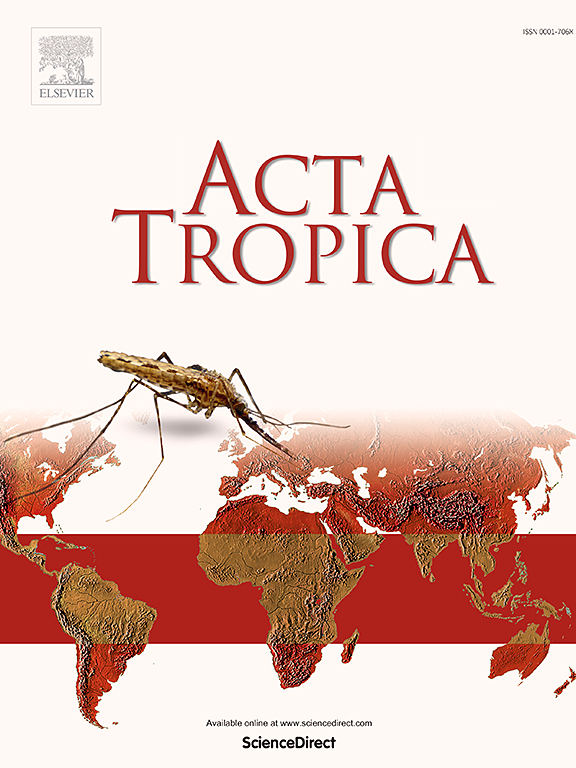Proteomic profiling of spleen in rat infected with clonorchis sinensis using liquid chromatography tandem mass spectrometry analysis
IF 2.1
3区 医学
Q2 PARASITOLOGY
引用次数: 0
Abstract
Clonorchiasis, caused by Clonorchis sinensis, remains a significant neglected tropical disease with substantial global health implications. As the largest immune organ in mammals, the spleen plays a crucial role in defending against C. sinensis infection; however, the molecular mechanisms underlying spleen pathogenesis during such infections remain poorly understood. To address this gap, quantitative Tandem Mass Tags (TMT) liquid chromatography-tandem mass spectrometry was employed to profile protein changes in the spleens of rats infected with C. sinensis. This analysis identified 40,664 peptides from 6817 proteins, including 371 and 464 differentially expressed proteins at 4 and 8 weeks post-infection (wpi) compared to the control groups, respectively. Clustering analysis revealed distinct proteomic profiles among the groups, while gene ontology analysis associated the differentially expressed proteins with biological binding activities and metabolic processes. KEGG analysis revealed significant enrichment of immune-related and metabolic pathways, including AMPK, IL-17, and p53 signaling pathways. These findings reveal dynamic proteomic alterations in the spleen during C. sinensis infection, offering valuable insights into the biomarker candidates for early diagnosis. Further studies are warranted to validate these potential biomarkers and explore their utility for early diagnosis of clonorchiasis.

用液相色谱串联质谱法分析感染华支睾吸虫病大鼠脾脏的蛋白质组学。
由支睾吸虫病引起的支睾吸虫病仍然是一种严重但被忽视的热带病,具有重大的全球健康影响。作为哺乳动物最大的免疫器官,脾脏在抵抗中华梭菌感染中起着至关重要的作用;然而,在这种感染中,脾脏发病的分子机制尚不清楚。为了解决这一空白,我们采用定量串联质量标签(TMT)液相色谱-串联质谱法分析了感染中华棘球蚴大鼠脾脏中蛋白质的变化。该分析从6817个蛋白中鉴定出40664个肽,其中371个和464个分别在感染后4周和8周与对照组相比存在差异表达。聚类分析揭示了各组之间不同的蛋白质组学特征,而基因本体分析将差异表达的蛋白质与生物结合活性和代谢过程联系起来。KEGG分析显示免疫相关和代谢途径显著富集,包括AMPK、IL-17和p53信号通路。这些发现揭示了中华按蚊感染期间脾脏蛋白的动态变化,为早期诊断的候选生物标志物提供了有价值的见解。未来的研究需要验证这些潜在的生物标志物,并探索它们在华支睾吸虫病早期诊断中的应用。
本文章由计算机程序翻译,如有差异,请以英文原文为准。
求助全文
约1分钟内获得全文
求助全文
来源期刊

Acta tropica
医学-寄生虫学
CiteScore
5.40
自引率
11.10%
发文量
383
审稿时长
37 days
期刊介绍:
Acta Tropica, is an international journal on infectious diseases that covers public health sciences and biomedical research with particular emphasis on topics relevant to human and animal health in the tropics and the subtropics.
 求助内容:
求助内容: 应助结果提醒方式:
应助结果提醒方式:


